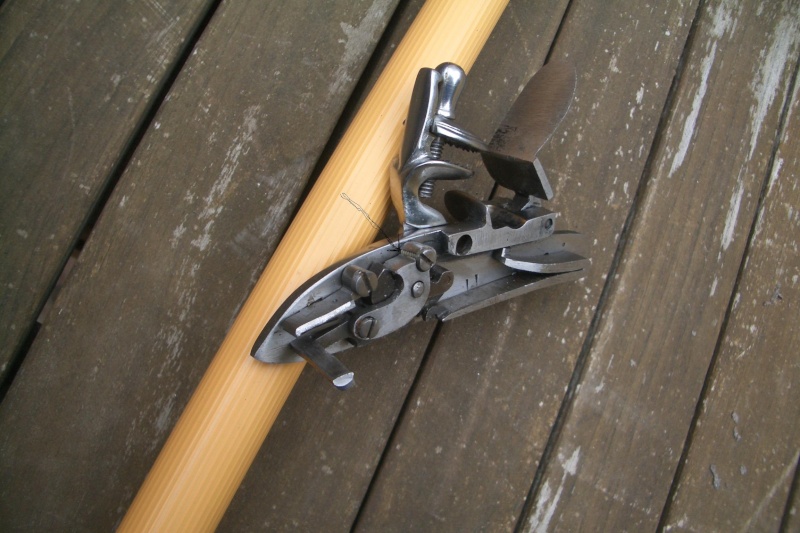The top screw seems to be the only one that is applying a compressive load to the bridle on this lock. I can't really tell from the picture if the bridle at this location is seated against the lock plate but it should be.
The lower screw cannot be tightened without causing the bridle to pinch the sear. If this happens, the sear will not move thus the lock cannot be fired.
This screw must be slightly snug but when tightening it, make sure the sear moves freely.
Getting back to the top screw, if it can be firmly tightened, firmly clamping the bridle to the lockplate, the exposed screw shank should not be a big problem.
If it cannot be firmly tightened, it still is no worse than many of the locks made in Spain by Ardesa for CVA and Traditions. Many of these do not have any bridle at all.
As for guns made in India, I cannot speak from first hand experience.
From what I've read, the quality of many of the Indian manufactured guns is rather poor, with many of them intended as decorations and not for actual shooting.
Other opinions seem to feel that some of the Indian guns are safe to shoot but the fit and finish of the parts is not very good.
I am not familiar with the method or requirements of "Proofing" used in India but I would guess that guns that are not functional would not have to pass any testing. Guns without touch-holes would not be considered "functional" so, in my opinion, they would not be proof tested.
I am not a great fan of people doing their own "proof testing" however I would suggest that if you intend to shoot this gun, after drilling the touch holes you should proof the gun.
To do this, I would load one barrel with a powder charge of 80 grains of black powder followed by a patched roundball that fits snugly into the bore.
The gun should be held by a device in such a way that the recoil from the gun firing would not damage it.
Once clamped in place, prime the pan of the loaded barrel.
Then, using a string at least 10 meters long, attached to the trigger, move away from the gun to the limits of the string and give it a pull.
After firing one barrel, I would repeat this with the other barrel.
Once the testing is complete, completely disassemble the gun.
Look for signs of powder burns all around the breech plugs.
Any sign of powder burns showing under the barrels on the stock indicates a leak which should be interpreted as a failure.
If there is no apparent leakage or damage the gun could be considered to have passed the test.
For even greater safety after conducting these proof tests if you have access to a company which rebuilds auto engines take the barrel to them and ask them if they can preform a "Magna-Flux" or Magnetic Particle Inspection on the barrels.
If they can, tell them you are wanting the inspection to find any cracks that may have developed during the proof test.
This method of inspection will find any cracks that may be in the metal. Even cracks inside the metal will be found.
Any crack indicates a failure of the proof test.
If the barrels pass all tests it could be considered safe to shoot however the powder load used for any further shooting should be limited to no more than 50 grains of powder.





